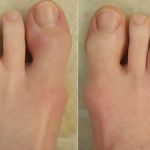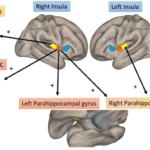 Editor’s note: ACR on Air, the official podcast of the ACR, dives into topics important to the rheumatology community, such as the latest research, solutions for practice management issues, legislative policies, patient care and more. Twice a month, host Jonathan Hausmann, MD, a pediatric and adult rheumatologist in Boston, interviews healthcare professionals and clinicians on the rheumatology front lines. In a series for The Rheumatologist, we provide highlights from these relevant conversations. Listen to the podcast online at acronair.org, or download and subscribe to ACR on Air wherever you get your podcasts. Here we highlight episode 83, “Psoriatic Arthritis,” which aired on Aug. 19, 2024.
Editor’s note: ACR on Air, the official podcast of the ACR, dives into topics important to the rheumatology community, such as the latest research, solutions for practice management issues, legislative policies, patient care and more. Twice a month, host Jonathan Hausmann, MD, a pediatric and adult rheumatologist in Boston, interviews healthcare professionals and clinicians on the rheumatology front lines. In a series for The Rheumatologist, we provide highlights from these relevant conversations. Listen to the podcast online at acronair.org, or download and subscribe to ACR on Air wherever you get your podcasts. Here we highlight episode 83, “Psoriatic Arthritis,” which aired on Aug. 19, 2024.
Diagnosing psoriatic arthritis (PsA) can be a challenge, which means rheumatologists must do some detective work when considering a patient’s signs and symptoms, said Philip J. Mease, MD, MACR. He is director of rheumatology research at the Providence Swedish Medical Center and clinical professor at the University of Washington School of Medicine, Seattle. Dr. Mease sat down with ACR on Air to provide insights into PsA.

Dr. Mease
“It’s true that, oftentimes these days, dermatologists kind of assume that if a person [with psoriasis] complains of pain or some kind of problem of a musculoskeletal nature, they have PsA. … We see patients and try to sort out what different musculoskeletal issues are going on,” said Dr. Mease, who is an ACR Master.
An extra wrinkle is that a person may have more than just one rheumatic condition. They could have PsA in addition to osteoarthritis (OA), fibromyalgia and other conditions. Sorting those symptoms out is part of the rheumatologist’s role.
Some factors Dr. Mease considers include the patient’s age, symptom duration, descriptors used and whether a patient has symptoms consistent with enthesitis, inflammation in which a tendon or ligament inserts into bone. The latter can be important because enthesitis sometimes precedes arthritis.
Another diagnostic clue is the spine and any related symptoms.
“How long does it take the person to get up and about? Do they feel like the Tin Man on The Wizard of Oz first thing and need Judy to come along with her oil can to get going? That’s a strong clue for an inflammatory arthritis condition,” Dr. Mease said.
This stiffness is in contrast with pain that gets worse throughout the day, which could be more consistent with OA, and in contrast with all over aches and fatigue, which could be more consistent with concomitant fibromyalgia.



